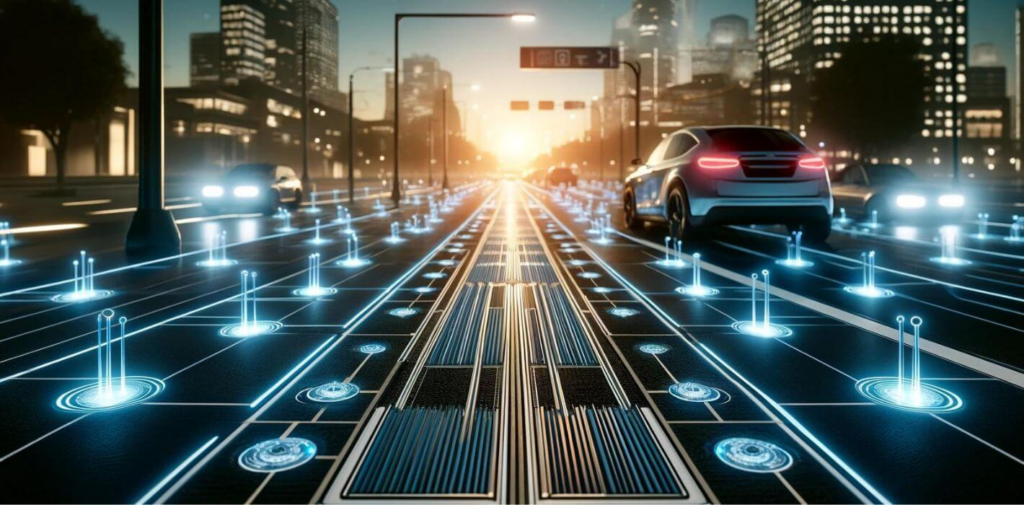
INTRODUCTION
Piezoelectric roads are an underrated innovation that could revolutionize sustainable energy by generating electricity from vehicle movement. These roads integrate piezoelectric materials that convert mechanical stress (from vehicles driving over them) into electrical energy.
HOW DOES IT WORK
Piezoelectric materials, like quartz and certain ceramics, generate an electric charge when subjected to mechanical pressure. In a piezoelectric road system:
1️⃣ Piezoelectric sensors are embedded beneath the asphalt or concrete.
2️⃣ As vehicles pass over, they apply pressure, deforming the materials and producing electricity.
3️⃣ This energy is harvested, stored in batteries, or fed into the power grid.
🔹 Energy Output: The more traffic and heavier the vehicles, the greater the energy generation.
🔹 Scalability: Works on highways, city roads, and even pedestrian walkways.
KEY TECHNOLOGIES OF PIEZOELECTRIC ROADS
To make piezoelectric roads efficient and scalable, several cutting-edge technologies are involved:
1️⃣ Advanced Piezoelectric Materials
🔹 Lead Zirconate Titanate (PZT): High-efficiency ceramic material used in most piezoelectric sensors.
🔹 Polyvinylidene Fluoride (PVDF): Flexible polymer-based piezoelectric material, ideal for curved or uneven surfaces.
🔹 Graphene-Based Piezoelectric Films: Enhances durability, efficiency, and conductivity for next-gen energy harvesting.
✅ Innovation: Researchers are developing nanostructured piezoelectric materials to improve energy conversion rates.
2️⃣ Energy Harvesting & Storage Systems
🔹 Supercapacitors: Rapidly store and discharge harvested energy for real-time applications.
🔹 Solid-State Batteries: Efficient storage solution for long-term power distribution.
🔹 Wireless Energy Transfer: Integrates with inductive charging to power electric vehicles directly from the road.
✅ Breakthrough: Hybrid storage systems that combine piezoelectricity with solar and kinetic energy for continuous power supply.
3️⃣ Smart Road Infrastructure & IoT Integration
🔹 Embedded Sensors: Monitor traffic flow, road health, and power generation.
🔹 AI-Based Traffic Control: Adjusts power distribution based on real-time vehicle movement.
🔹 Blockchain for Energy Transactions: Secure and transparent energy management in smart cities.
✅ Future Vision: Fully automated road networks that self-generate and distribute electricity.
4️⃣ Nanotechnology & Surface Engineering
🔹 Self-Healing Piezoelectric Materials: Extends lifespan by repairing micro-cracks caused by road wear.
🔹 Hydrophobic & Heat-Resistant Coatings: Enhances performance in extreme weather conditions.
🔹 Nano-Piezoelectric Arrays: Maximizes power output by using ultra-thin energy-harvesting layers.
✅ Next Step: 3D-printed piezoelectric roads for cost-effective, large-scale deployment.
5️⃣ Hybrid Energy Systems
🔹 Piezoelectric + Solar Roads: Dual-layer roads combining piezoelectric harvesting with solar panels.
🔹 Piezoelectric + Wind Energy: Uses vehicle-induced airflow to power small wind turbines along highways.
🔹 Piezoelectric + Thermoelectric Generators: Converts road surface heat into additional electricity.
✅ Ultimate Goal: Energy-positive roads that produce more power than they consume.
ADVANTAGES OF ROADS
✅ Sustainable Energy Source – Converts wasted mechanical energy into usable electricity.
✅ No Environmental Pollution – Zero emissions, unlike fossil-fuel-based power sources.
✅ Reduces Energy Waste – Captures energy from vehicle movement that would otherwise be lost.
✅ Enhances Smart Cities – Can power streetlights, traffic signals, and EV charging stations.
✅ Works in Any Weather – Unlike solar or wind power, piezoelectric roads generate energy regardless of climate.
POTENTIAL APPLICATIONS
🚗 Highways & Expressways – Generate power from high-traffic roads, supplying electricity to nearby cities.
🚦 Smart Traffic Systems – Powering sensors, cameras, and traffic lights.
⚡ Electric Vehicle Charging – Wireless in-road charging for moving electric vehicles.
🏙 Urban Infrastructure – Powering streetlights and public utilities in smart cities.
🚶 Pedestrian Walkways – Piezoelectric sidewalks and crosswalks generate electricity from foot traffic.
CHALLENGES AND FUTURE DEVELOPMENT
⚡ Efficiency Issues – Current technology has low energy conversion rates, but advancements in nanotechnology could improve this.
💰 High Initial Cost – Installation is expensive, but long-term benefits could outweigh costs.
🔧 Durability & Maintenance – Roads experience heavy wear and tear, requiring resilient piezoelectric materials.
Scientists are exploring graphene-based piezoelectric systems and hybrid energy harvesting (piezoelectric + solar + kinetic) to enhance efficiency.
